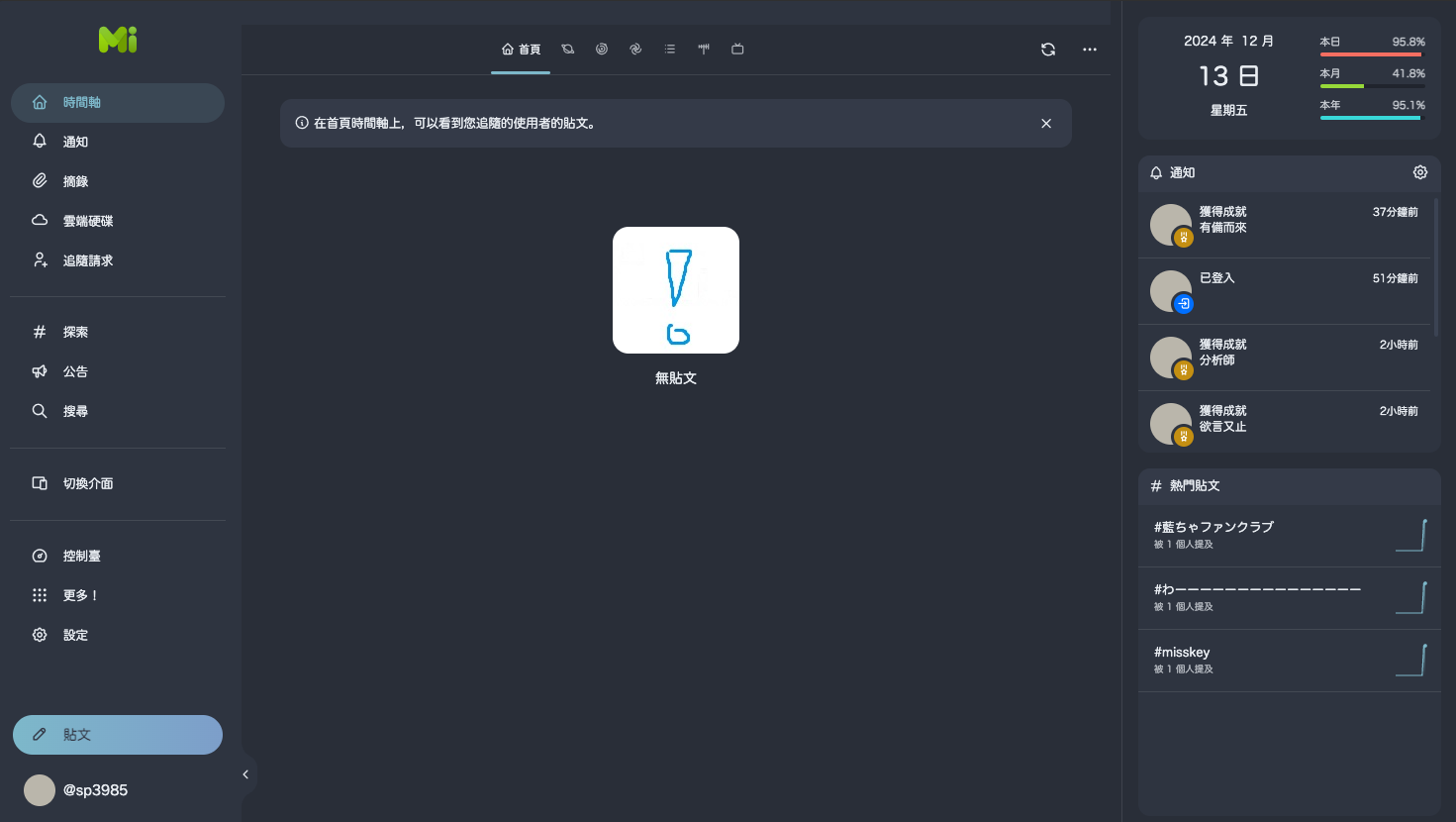Intro: Why I’m Exploring Decentralized Platforms
If you’ve been active on Twitter lately (yes, I’m sticking with “Twitter” instead of “X”), you’ve probably noticed several waves of users exploring alternative platforms. Like many others, I’ve signed up for a few decentralized platforms along the way. But here’s the thing - Twitter’s huge community isn’t going anywhere, and without something truly dramatic happening, it’s hard to imagine users suddenly switching to new platforms en masse. This situation got me thinking about how social media platforms control our experience, from their algorithms to data restrictions.
Here’s a common frustration: you find an interesting post or a well-researched piece from an independent creator, and you want to share it. But if the original author isn’t active on your platform of choice, properly attributing and directing traffic back to them becomes a real challenge. Plus, you’re often fighting against platform restrictions on URL sharing - whether it’s anti-phishing measures or the platform’s own traffic retention strategies, these limitations can significantly reduce your post’s visibility.
Another pain point? The character limit dance. When you want to quote an article and add your insights, you quickly bump into platform restrictions. Sure, you can break it into threads, and some argue this helps with writing concisely. Social media managers even share tips for boosting engagement within these constraints. But let’s be honest - it feels rather limiting (or as we say in Taiwanese, gāi-gio̍h), especially when you’re trying to develop a comprehensive argument.
These challenges sparked my curiosity about decentralized communities and the Fediverse. Let’s explore what these alternatives have to offer!
First Steps into Decentralized Social Media
Let’s start with something interesting from the Mastodon documentation about Federation:
Federation is a form of decentralization. Instead of a single central service that all people use, there are multiple services, that any number of people can use.
Just like you can send an email from your Gmail account to someone from Outlook, Fastmail, Protonmail, or any other email provider, as long as you know their email address, you can mention or message anyone on any website using their address.
To enable communication between these different websites, most platforms use ActivityPub - an open-source, decentralized protocol recommended by W3C. You can find the technical specifications at W3C’s ActivityPub documentation.
Here’s a fun tidbit: “Fediverse” (a clever mashup of “Federated” and “Universe”) is the collective term for websites that communicate through the ActivityPub protocol. I have to admit, when I first encountered this term, it sounded both cool and a bit dramatic - like something out of a sci-fi novel!
My main motivation was regaining ownership and control over my micro-blog content. After researching platforms that balance user adoption with self-hosting capabilities, I decided to experiment with two options: Mastodon and Misskey.
Mastodon
Mastodon, offers a Twitter-like interface and experience, with robust app support across various platforms. While it’s a relatively mature project with extensive deployment documentation available online, many users report facing various deployment challenges.
An interesting perspective comes from “The Challenges of the Fediverse: What No One Is Prepared to Talk About”. The article raises concerns about self-hosting difficulties and how popular instances might inadvertently undermine the decentralization principle. While I agree that lowering the self-hosting barrier is crucial, I have a different take on the “rich get richer” phenomenon in social platforms. It’s natural for users to gravitate toward more stable instances, and as long as they maintain the freedom to migrate their data, I believe this still aligns with decentralization principles.
However, here’s the catch: neither Mastodon nor its alternatives currently offer a seamless experience for deployment and migration. This challenge isn’t unique to Mastodon - even Threads, which hasn’t fully joined the Fediverse yet, faces similar complexities. As noted by Micro.blog’s creator, implementing federation features requires careful consideration of account migration details.
After reading “Single-user Mastodon Instance is a Bad Idea” and evaluating Mastodon’s resource requirements, I decided against self-hosting. For my personal use case, Mastodon’s social media experience feels somewhat limited, though this is probably an inherent characteristic of decentralized social platforms. While services like mastohost offer convenient deployment options, the subscription cost doesn’t align with my goal of self-hosting on either a VPS or home server.
Misskey
Misskey emerged as another popular Fediverse destination, particularly after Twitter’s policy changes (notably the controversial decision to use uploaded media for AI training). This open-source project, created by Japanese developers, offers a lighter alternative to Mastodon with a more vibrant interface, making it an intriguing option to explore.
While most comprehensive documentation is in Japanese (reflecting its primary user base), setting up a local instance using docker-compose is straightforward. The platform offers extensive configuration options for customizing your personal interface. I quickly converted the configuration files to Kubernetes YAML and deployed it on my personal server. As various reviews suggested, the platform feels like a fusion of Twitter and Discord, featuring multiple channels and rich emoji support that embraces Japanese internet culture.
What caught my attention was the clever onboarding experience - it includes interactive mini-tasks that guide new users through community engagement and achievement systems. Compared to Mastodon (which, true to its name, can be as challenging to manage as a mammoth!), Misskey runs significantly lighter.

Though lighter than Mastodon, the resource consumption still felt a bit heavy for my personal use case. The extensive emoji support was tempting, I’ll admit! While I successfully got it running, I encountered some bugs along the way. The community offers various workarounds, but solving these issues might require what the Japanese call “shokunin damashii (職人魂)” (craftsmanship and patience). For now, I’ve decided to delete the namespace and revisit the setup when I have more time to tinker with it properly.
Shifting to a Lightweight Solution: Memos
While researching popular self-hosted services, I stumbled upon Memos - a tool that unexpectedly proved perfect for creating a “personal digital space.”
An open-source, self-hosted note-taking solution designed for seamless deployment and multi-platform access.
While Memos is primarily positioned as a self-hosted note-taking application, its Explore and Profile pages within a single instance caught my attention. These features opened up possibilities for both preserving digital information and sharing content without platform restrictions. Here are my key observations from using it:
What’s Good
- Combines social and private note-taking features, complete with a heatmap showing your output patterns and frequency
- Easy integration with external storage for resources and SSO login systems
- Incredibly lightweight based on metrics-server readings (46Mi memory, 1m CPU) excellent value for personal use
What’s Weak
- As a note-taking tool, while it supports markdown syntax, it lacks WYSIWYG (What You See Is What You Get) editing
- Being an in-development open-source project, future version upgrades might require manual data migration handling
- Uses a social media-like approach for media resource linking, but image display sizing could use some optimization
- Similarly, this association model differs from traditional note-taking apps where images can be inserted into specific text passages. Instead, media exists as associated materials for each note.
- This might actually better support Zettelkasten note-taking practices. Given its note-taking focus, it’s not part of the Fediverse and likely won’t be.
I’ve found myself using Memos not just for short notes but also as a space for social media content that might otherwise be constrained by platform limitations. Since it’s self-hosted, I have complete control over character limits and image compression. Beyond social media archiving, it serves as a temporary note storage when Obsidian isn’t convenient. The responsive web design works beautifully on mobile devices, and there are community-developed native applications available. I’m planning to write another guide about setting up the self-hosted services I currently use.
Outro: The Future of Decentralized Social Media
During my research, and even now without having chosen to self-host an instance, I’ve developed some interesting thoughts. The big question is: Can decentralized social platforms truly flourish? Or perhaps more intriguingly - does it matter if they do? Without ads and algorithmic content amplification, most decentralized platforms currently struggle to attract a critical mass of users. This brings us to Threads, which sits in an interesting “half-in” state, not yet fully implementing the ActivityHub protocol.
A recent TechCrunch article “Why Meta is looking to the fediverse as the future for social media” suggests Meta is preparing for the next wave of platform shifts. The potential for micropayments and subscription-based content could introduce viable business models to decentralized communities. The article also discusses content moderation, including Meta’s proposal to offer their moderation systems as a subscription service to decentralized communities. However, I’m skeptical about whether moderation mechanisms should be integrated at the protocol level.
Interesting discussions about the future of the fediverse on Reddit and Mastodon highlight user experience and unclear business models as key challenges. But here’s an interesting perspective: perhaps these platforms don’t need to “grow big” like commercial platforms. By focusing on improving user experience while maintaining decentralization principles, a smaller but engaged user base might actually lead to higher quality interactions. As for Threads’ eventual integration into the fediverse? Well, that’s a story still unfolding.
The ideal of decentralized social networks can be summed up as “Driving Social Commerce With Protocols, Not Platforms.” After diving into these reports and discussions, I’ve developed a clearer picture of where decentralized communities might be heading. Meta, with its massive user base, could benefit significantly from joining the Fediverse - even if creators leave their platform, users can still follow them from Threads. With Meta’s support, the Fediverse likely has room to grow, though we might see uneven development across different nodes in this federated universe.
Platforms and services come and go - being part of this digital era, I’ve witnessed quite a few disappear (Wretch, Taiwan’s once-popular blogging platform, certainly left a lasting impression!). Imagine a future where we no longer need to archive or backup our digital footprints from soon-to-be-discontinued platforms. Here’s an interesting parallel: Nintendo deserves a shout-out for their user-friendly approach. When my first Switch became a brick, I could easily transfer my Animal Crossing island. More recently, with Pocket Camp’s shutdown looming, Nintendo released an offline version, ensuring players can preserve their carefully crafted camping sites.
I’ll continue monitoring developments in decentralized social platforms.
Cover Photo by Greg Rakozy on Unsplash
